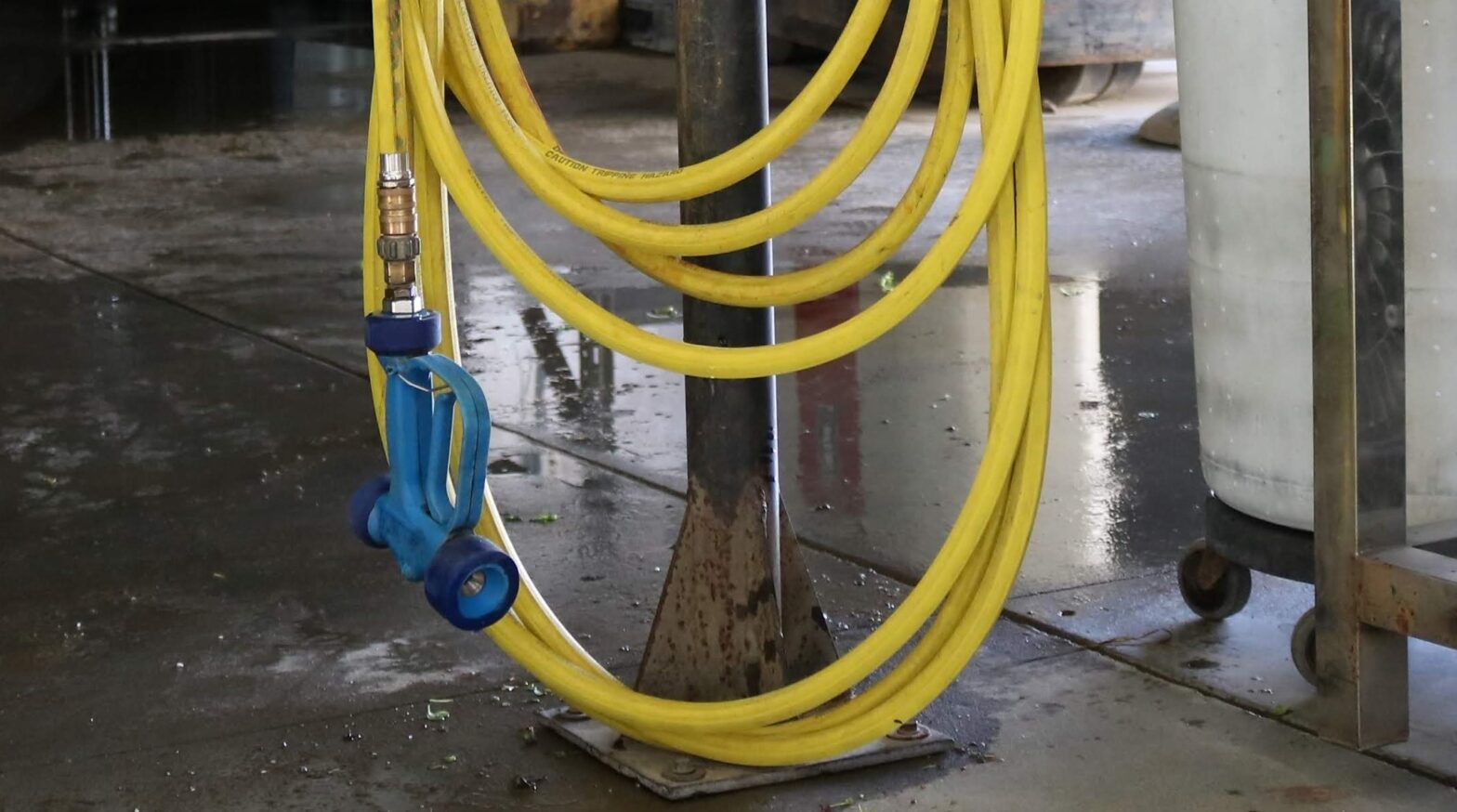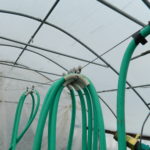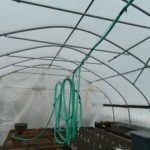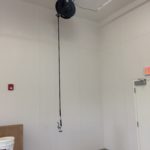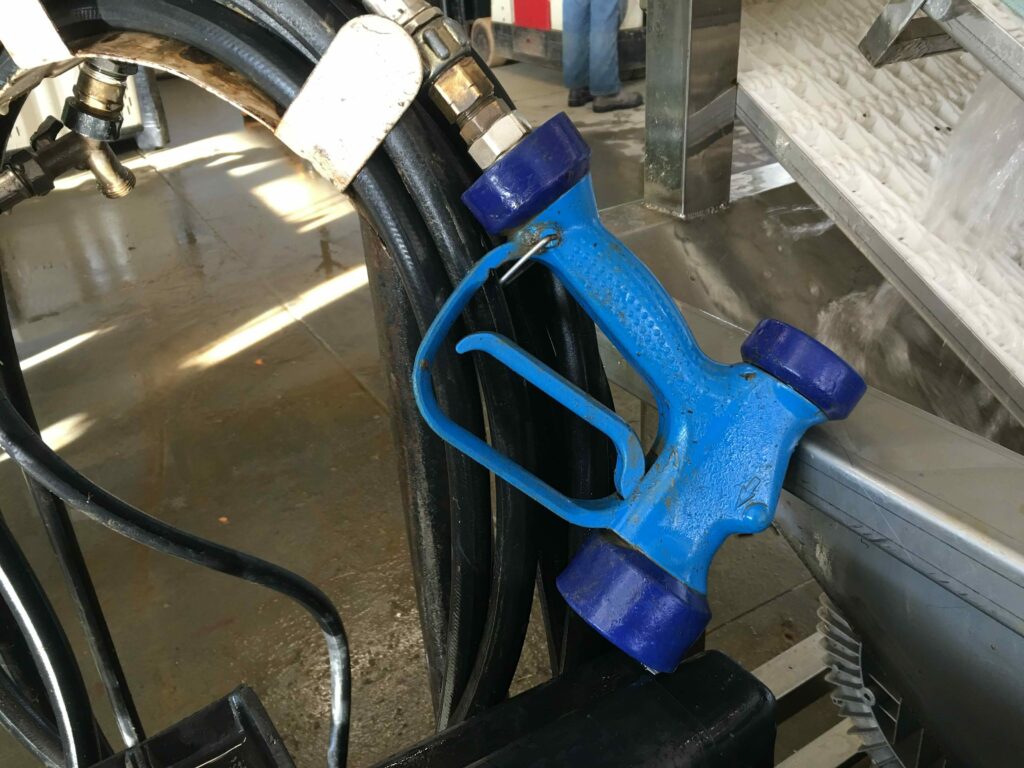Having water when and where you need it can make a big difference in vegetable wash station efficiency.
Planning for multiple “drops” or spigots around the wash area can make it more convenient to access water where it is needed.
Investing in a hose hanger, hose reel or a trolley can help keep the hose off the ground, resulting in a cleaner and more safe work environment.
It can be helpful to consider the routing of the supply lines to avoid condensation dripping on people, food contact surfaces, and produce. Cold water flowing through the lines on a warm humid day can result in condensation of water that can drip from the lines. Running the lines away from walkways and produce areas can avoid this being a problem. Running the lines down low in wash areas can also help keep any condensation exposure to a minimum.
Hose Hangers
Hose hangers are the simplest hose management tool to install. These are simply wall mounted or free standing rounded shelves or manually wound reels that accommodate a coiled hose when not in use. They are generally available from the hardware store, though some growers suggest “buying up” to get a heavy duty version that will last in an environment where they are used daily. Molded plastic hangers are common for household use, but are prone to cracking and breaking. Metal hangers are available and are likely better suited to regular use in a vegetable wash/pack area.
Yard Butler Hanger, $12 from Zoro
Liberty Wall Mount Hanger, $11 from Zoro
Hose Trolleys
Hose trolleys have been in use in greenhouses and propagation houses for some time. These are generally made up of a multi-strand metal wire with pulleys (similar to a dog run). Multiple pulleys have hangers below them to hold sections of hose. The hose expands out when needed and contracts back in an accordion fashion for storage. Trolleys can be made using materials from the local hardware store (metal wire, pulleys, PVC pipe or hose split lengthwise to support the hose, and some zip ties.) Several vendors offer hose trolley kits as well (e.g. FarmTek, Johnny’s)
Hose Reels
Hose reels provide a spring loaded retraction reel that rolls the hose up neatly after use. These can be ceiling or wall mounted depending on your space and need. Some growers find it helpful to have one mounted under a counter or sink. The reels come in different hose lengths and different hose diameters. Two popular options are available from Equip and Hannay.
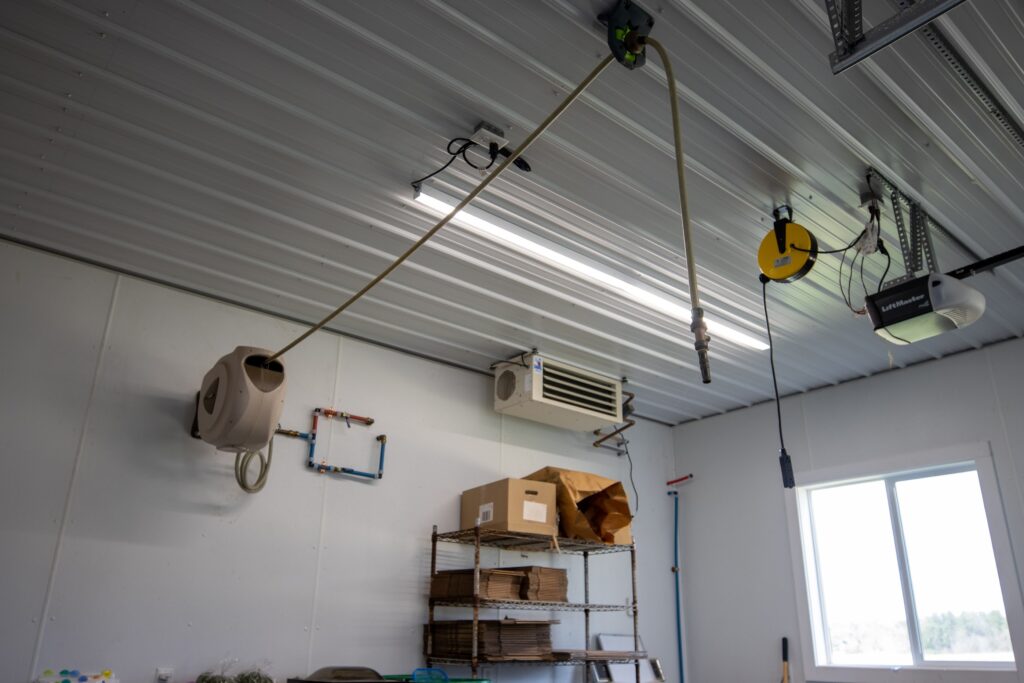
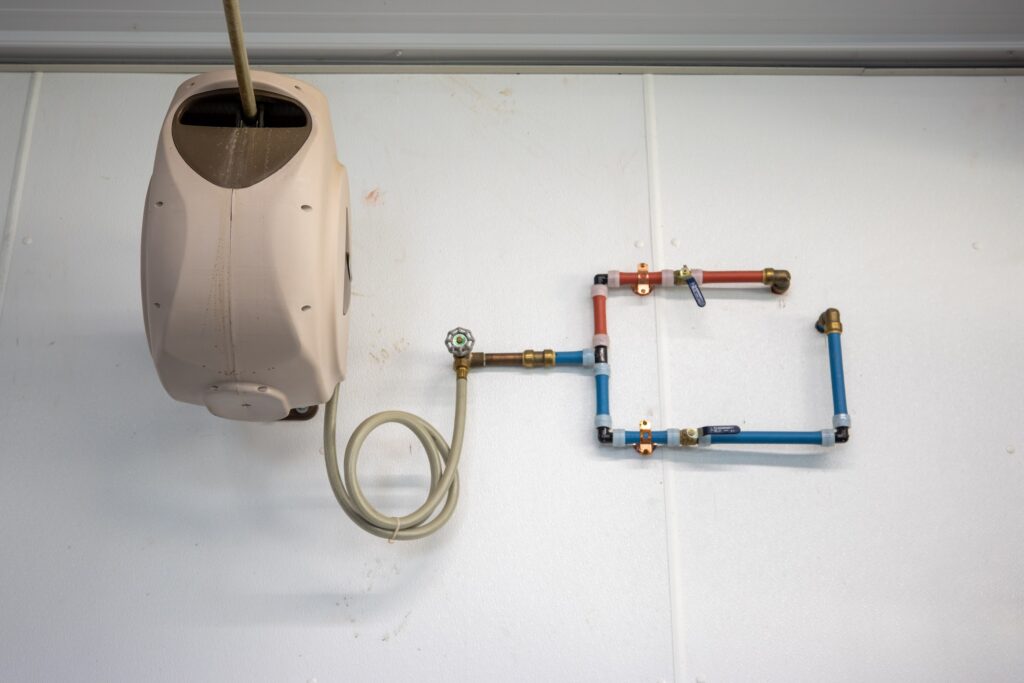
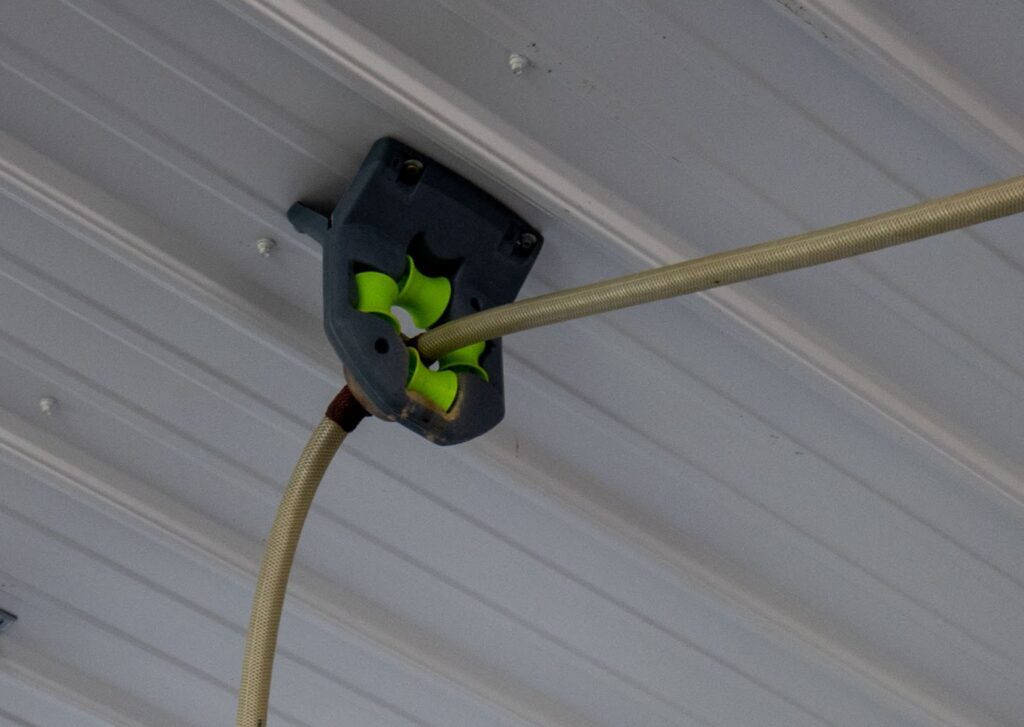
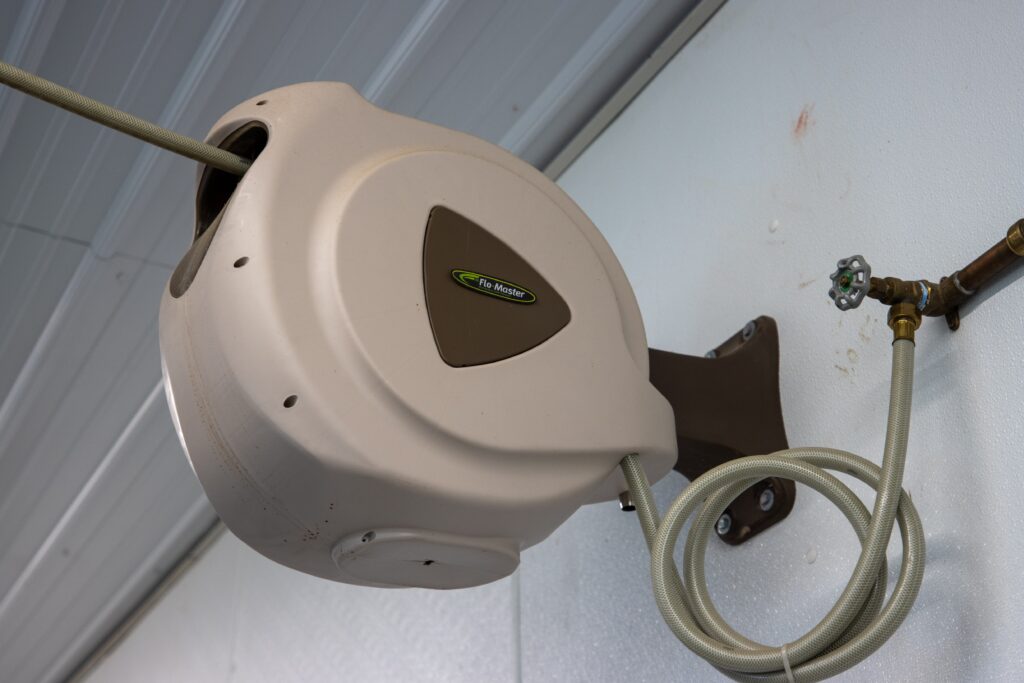
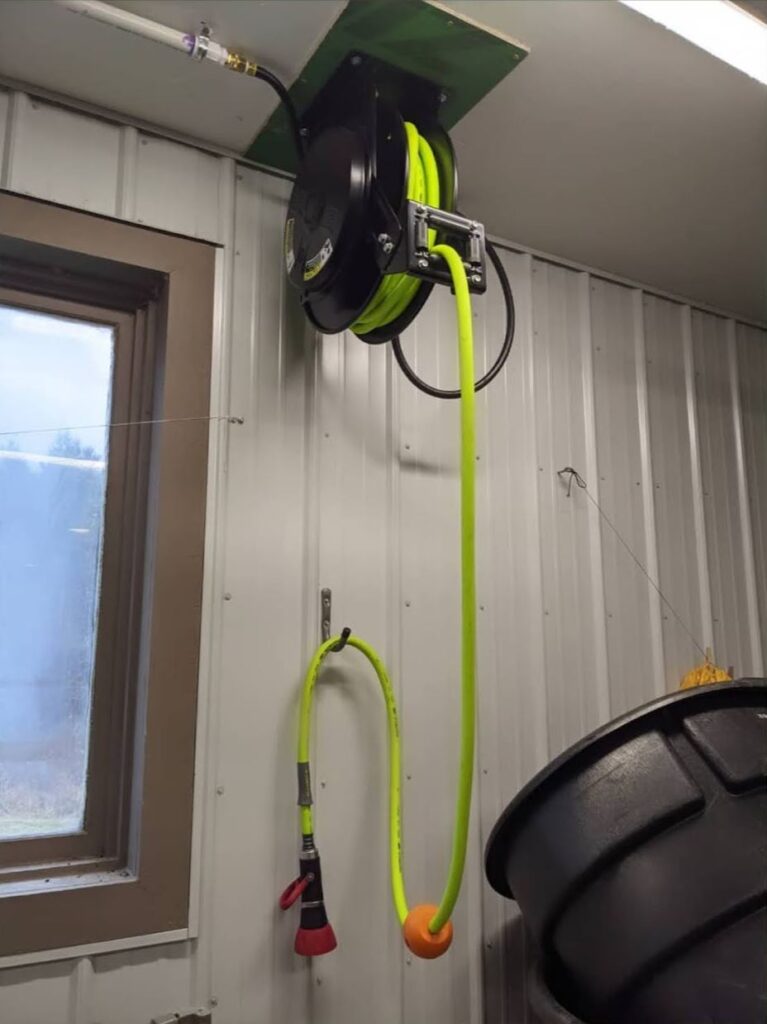
Hose Nozzles
Standard, inexpensive hose nozzles work well, but may not hold up to excessive use on a vegetable farm. If you are looking to upgrade to a more durable, and versatile hose nozzle consider upgrading to a “high-pressure wash down gun,” some times referred to as the “big blue gun.”
This can be found at Johnny’s under their tools section.
Quick Connects
Quick connects may be useful if you find yourself frequently switching out watering wands and spray nozzles or moving hoses from one location to another. They seal tight, and do not require tools or threading connections so they can really speed up switching between tasks. These fittings also provide a swivel which makes moving around the hose during use a bit easier.
Heavy Duty Hoses
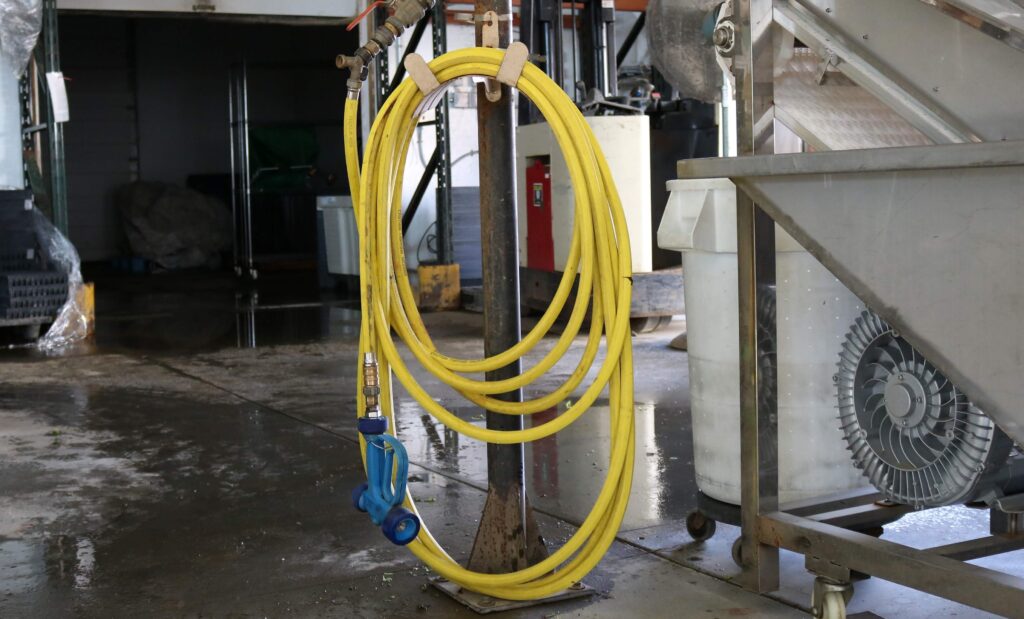
Investing in a high quality hose makes sense when being used every day for business. An inexpensive garden hose is fine for watering the lawn. However, if reliability and durability is needed for dependable irrigation or post harvest wash down a high quality hose is worth the investment. EPDM Rubber hoses are long lasting, flexible, and resist kinking. The fittings on the ends of higher quality hoses will hold up better with prolonged use and abuse as well. A common example is the Dramm Colorstorm Premium Rubber Hose Series. These hoses can be found from most greenhouse and horticulture supply companies or commercial suppliers.
Headers & Manifolds
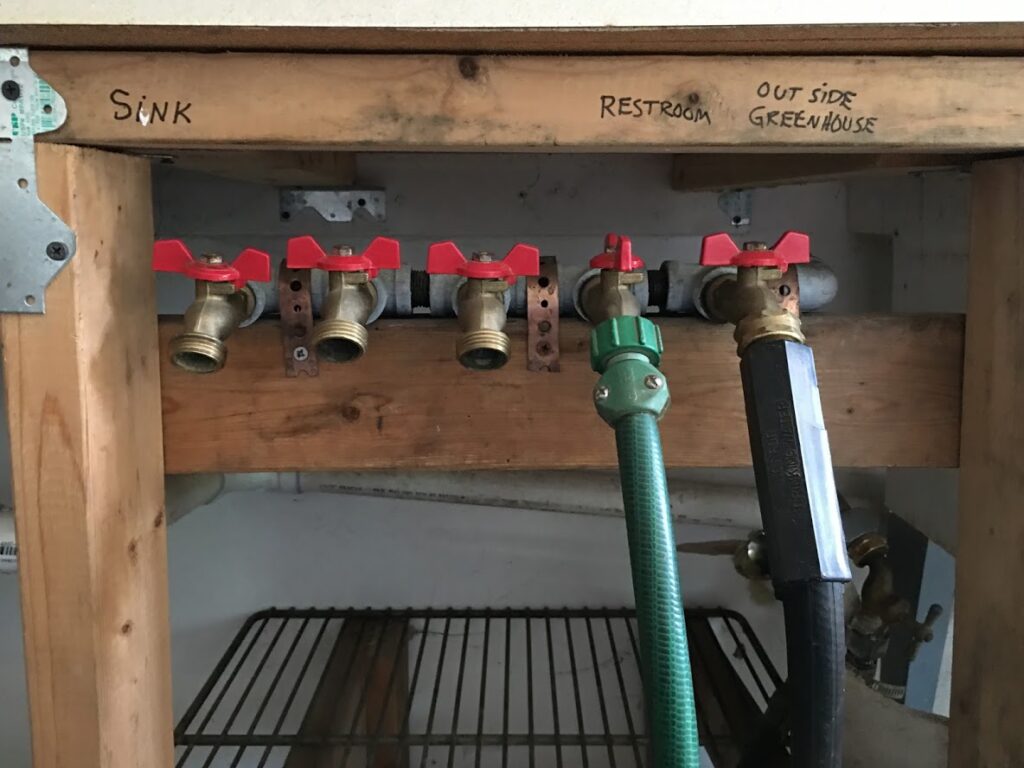
Supply lines into the packshed are most likely only a 1″ supply, so headers don’t need to be any larger than that, and 3/4″ hoses would also work well before branching to multiple different hose drops divided by various splitters. You can make your own header using off the shelf plumbing and valves. PVC valves may provide a larger handle then some prefabricated manifolds which is helpful for regular use. When selecting splitters or building a manifold consider it’s location and who is using it. Plastic adapters may not be as durable as a metal fitting.
